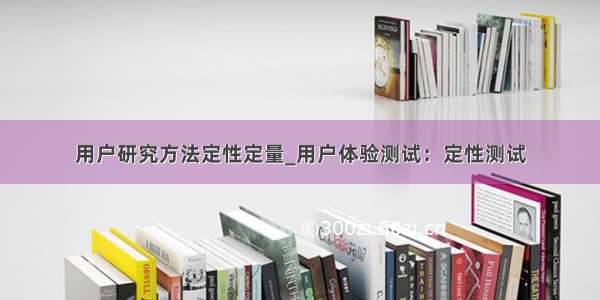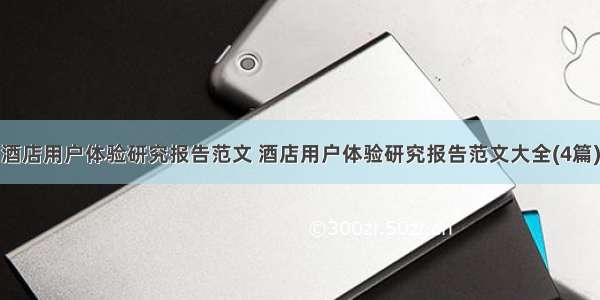
用户研究方法定性定量
什么是定性测试?(What is Qualitative Testing?)
Qualitative testing—which can take the form of interviews or other directly-observed usability tests—tends to be exploratory and with the goal of gaining a more in-depth understanding of the user’s experience. It can be in-person or via video-conferencing tools like Skype or Google Hangouts.
定性测试(可以采取访谈或其他直接观察到的可用性测试的形式)往往是探索性的,目的是获得对用户体验的更深入了解。 它可以是面对面的,也可以是通过Skype或Google Hangouts之类的视频会议工具来进行的。
Qualitative testing aims to gather information on a user or group’s everyday life experiences and motivations to see how these details might affect their use of the product or tool.
定性测试旨在收集有关用户或小组的日常生活经验和动机的信息,以查看这些细节如何影响他们对产品或工具的使用。
结果(Results)
When using qualitative research methods, it is important for the researcher to recognize that they may have an effect on the research results. Since it is the human experience that is being researched instead of hard data (number of clicks, login location trends, etc.), it is difficult to remain completely objective during testing or when assessing results.
当使用定性研究方法时,重要的是要让研究人员认识到它们可能会对研究结果产生影响。 由于正在研究的是人类经验,而不是硬数据(点击数,登录位置趋势等),因此在测试或评估结果时很难保持完全客观。
The results also won’t necessarily be reproducible. This is because the factors that affect a user’s experience are varied and can change from day to day.
结果也不一定是可重复的。 这是因为影响用户体验的因素是多种多样的,并且可能每天都在变化。
These factors can take the form of a user being more stressed one day than another due to new events in their life or having more responsibilities that day, users having completely different life experiences than one another, bad weather affecting the user’s mood, and anything else that affects a person’s personal or emotional life.
这些因素可能表现为,由于一天中生活中的新事件或一天中承担更多的责任,用户一天比另一天承受更大的压力,用户的生活经历与彼此完全不同,恶劣的天气影响着用户的情绪等影响一个人的个人或情感生活。
Results of qualitative testing are typically shown as themes or categories instead of numbers.
定性测试的结果通常显示为主题或类别,而不是数字。
例(Example)
Here’s a great example from The Interaction Design Foundation on the difference between quantitative research and qualitative research:
这是The Interaction Design Foundation关于定量研究与定性研究之间区别的一个很好的例子:
To illustrate the difference, let’s say you want to study a user group’s exercise habits. You can choose to study these using either quantitative or qualitative research methods.
为了说明不同之处,假设您要研究用户组的运动习惯。 您可以选择使用定量或定性研究方法进行研究。
If you use aquantitativemethod, you could create an online survey and distribute it to a large number of participants. Participants must answer predefined questions about their exercise habits such as “How many hours per week do you exercise?”
如果使用定量方法,则可以创建在线调查并将其分发给大量参与者。 参与者必须回答有关其锻炼习惯的预定义问题,例如“您每周锻炼几小时?”
If you do your job dutifully, the survey answers can be numerically summarized without bias from your own opinion or personal experience with exercise.
如果您尽职尽责,可以对调查答案进行数字汇总,而不会因您自己的观点或个人运动经验而产生偏差。
If you use aqualitativemethod, you could choose to do interviews with a limited number of participants, where you talk to the participants about when, where, and how they exercise.
如果您使用定性方法,则可以选择对有限数量的参与者进行采访,并在其中与参与者讨论他们何时,何地以及如何锻炼。
Because the interview is similar to a conversation, your results will depend on how you ask follow-up questions to the participants’ answers – and how you do that will to some extent depend on your personality and your own experience with exercise. Similarly, the results of the interview also, to some extent, depend on a subjective interpretation of what the participant has told you.
因为访谈类似于谈话,所以您的结果将取决于您对参与者的回答提出后续问题的方式–以及您如何做将在一定程度上取决于您的性格和您自己的锻炼经验。 同样,面试的结果在某种程度上还取决于对参与者告诉您的内容的主观解释。
测试方法 (Testing Methods)
From ”12 UX Research Techniques (Quantitative and Qualitative)” by Kevin Dalvi:
凯文·达尔维(Kevin Dalvi )的 “ 12种用户体验研究技术(定量和定性) ”摘录:
面试 (Interviews)
Typically covers three types of interviews:
通常涵盖三种类型的采访:
directed interviewswhere the researcher asks specific questions to the users and attempts to compare responses with other users
研究人员向用户询问特定问题并尝试与其他用户比较回答的定向访谈
non-directed interviewswhere the researcher attempts to have more of a general discussion with the user(s)
研究人员试图与用户进行更多一般性讨论的非定向访谈
ethnographic interviewswhere the researcher observes the user(s) in their own environment to understand how they approach certain aspects, accomplish certain tasks.
人种学访谈,研究人员在他们自己的环境中观察用户,以了解他们如何处理某些方面,完成某些任务。
调查和问卷 (Surveys and Questionnaires)
A quick way to collect information from a large number of users but their obvious limitation is lack of any interaction between the researcher and the users.
从大量用户收集信息的快速方法,但其明显的局限性在于研究人员与用户之间缺乏任何交互。
可用性测试 (Usability Tests)
Involves asking user(s) to use the app/product to accomplish certain goals. There are three variations of such tests:
涉及要求用户使用应用程序/产品来实现某些目标。 这种测试有三种变体:
moderated testing—where the users are brought into the lab and given specific tasks or tests to perform.
适度的测试-将用户带入实验室并执行特定的任务或测试。
unmoderated testing—where the users complete the test on their own time typically remotely.
非审核测试-用户通常在自己的时间远程完成测试。
guerrilla testing—a more casual form of testing where random users at a social or community location are asked to use the app/product and provide informal feedback.
游击测试-一种较为随意的测试形式,要求社交或社区位置的随机用户使用应用程序/产品并提供非正式反馈。
卡分类 (Card Sorts)
The primary goal of a card sort test is to understand how users perceive relationships and hierarchy between various content, categories and other information. This is typically used to generate appropriate information architecture or site maps.
卡片分类测试的主要目标是了解用户如何理解各种内容,类别和其他信息之间的关系和层次结构。 这通常用于生成适当的信息体系结构或站点地图。
树测试 (Tree Tests)
Similar to card sort, the primary goal is to test whether the product/app has the appropriate level of information hierarchy is being designed within the product.
与卡片分类类似,主要目标是测试产品中是否设计了产品/应用具有适当级别的信息层次结构。
A / B测试 (A/B Tests)
Focuses on providing the user with two or more options and documenting the user’s preferences amongst the options. There are also advanced or focused A/B tests tests on specific aspect of the product such as the Design Elements, Information Hierarchy, Navigation and more.
重点在于为用户提供两个或多个选项,并在选项中记录用户的偏好。 还针对产品的特定方面(例如设计元素,信息层次结构,导航等)进行高级或重点A / B测试测试。
角色发展 (Persona Development)
This is essentially a representation of a group of a user who exhibit a very similar pattern in terms of behavior of using the application regardless of age, gender, location, education and profession.
这实质上是一组用户的代表,这些用户在使用应用程序的行为方面表现出非常相似的模式,而与年龄,性别,地理位置,学历和职业无关。
资料来源(Sources)
Mortensen, Ditte. “Best Practices for Qualitative User Research.”Interaction Design Foundation.January, . Accessed: February 13, .
莫滕森,迪特。 “定性用户研究的最佳做法。”交互设计基金会。1月。访问:2月13日。
翻译自: /news/user-experience-testing-qualitative-testing/
用户研究方法定性定量
















